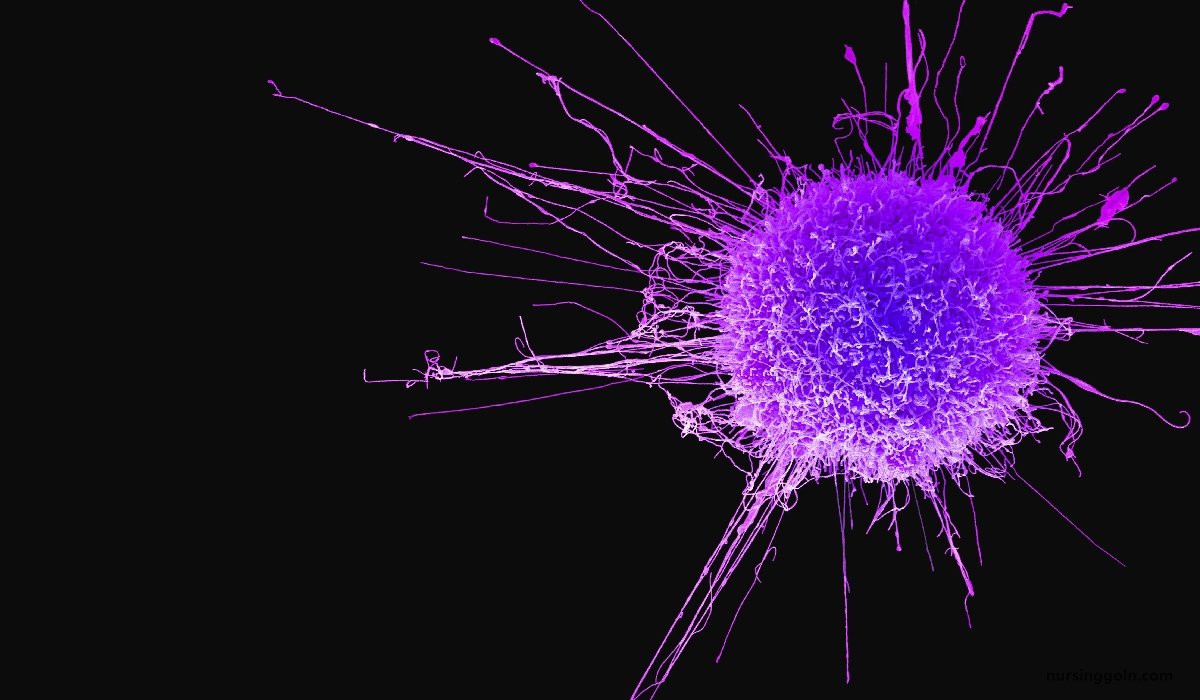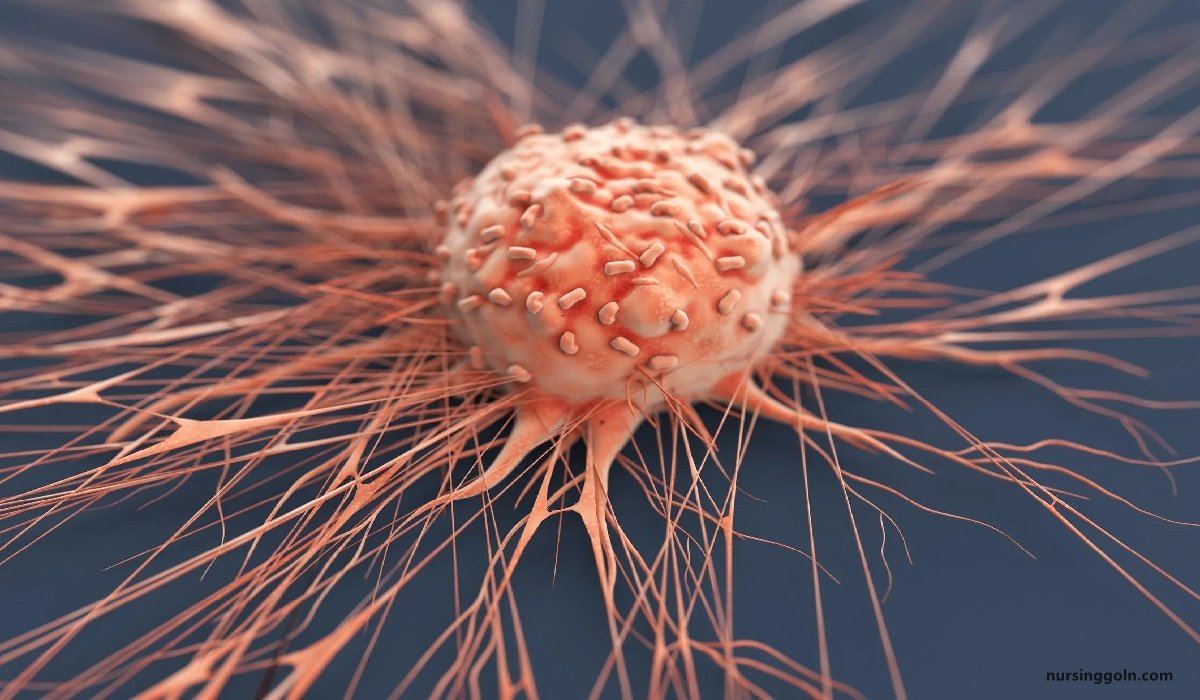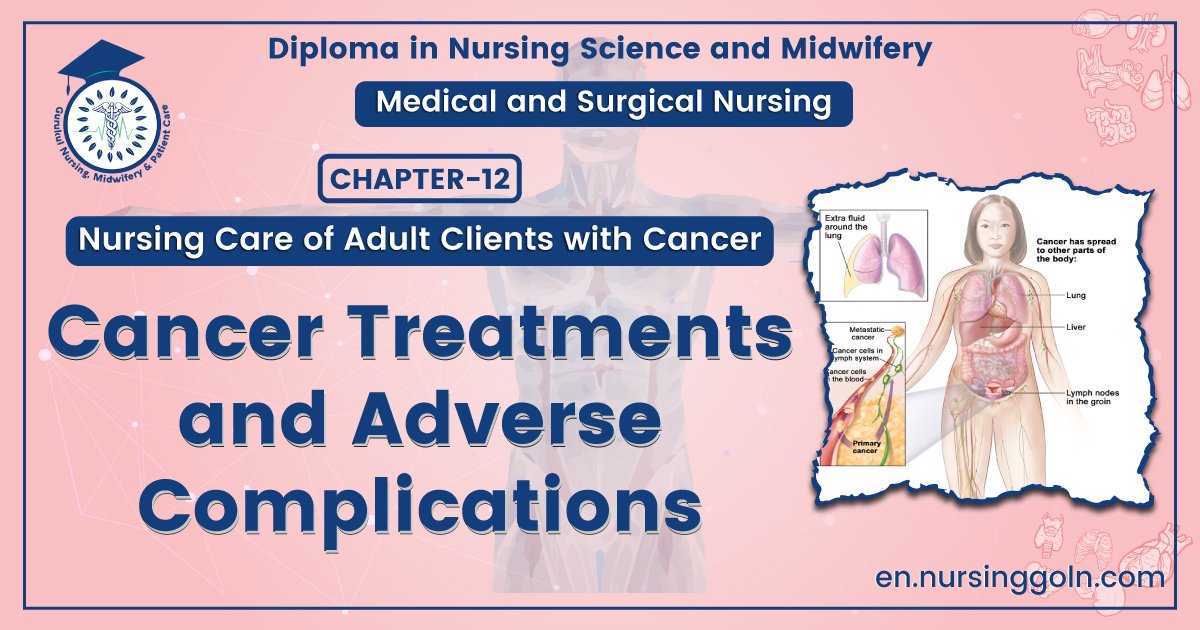Cancer treatments and adverse complications – This course is designed to understand the concept of community health nursing: nurses’ roles and interventions in family health, school health, occupational health, environmental health, elderly health care, gender issues, disaster management and principles and terminology of epidemiology. The aim of the course is to acquire knowledge and skills in community health nursing.

Cancer treatments and adverse complications
1. The main objectives of cancer therapy is to
- Cure the patient and
- Ensure minimal functional and structural impairment results from the disease
2. Palliative therapy: The aim is to improve the quality of life with a minimized impact of toxicity (mostly chemotherapy)
3. Adjuvant treatment: Administered after surgery and the aim is to increase the disease free and overall survival
4. Neoadjuvant treatment: Administered before surgery and the aim is to improve survival
5. Surgical treatment
- Biopsy– for histological or cytological diagnosis of cancer
- Excision– main curative management of most solid cancers. In early localized cases (colorectal, breast and lung cancers) the cure rate is high.
- Palliation– surgical procedures are often the most effective way of palliating symptoms (colostomy in faecal incontinence)
6. Chemotherapy: Chemo drugs inhibit the proliferation of cells. But these are not specific for cancer cells and affect also the normal tissues, bone marrow, skin and gut.
- Combination therapy: In order to overcome drug resistance and to limit the side effects
- Conventionally given I/V every 3-4 weeks. In total 4-8 such cycles
- Oral chemotherapeutic agents
7. Radiation therapy: It is the use of ionizing radiation to destroy malignant cell population. It may be administered externally (teletherapy) or internally (brachytherapy). The radiotherapys are X-ray, Y-ray and isotopes

Cancer Screening:
Scientists continue to develop tests that help find specific types of cancer before signs or symptoms appear. This is called screening. The main goals of cancer screening are to:
- Reduce the number of people who die from the disease, or eliminate deaths from cancer altogether
- Reduce the number of people who develop the disease

Types of Cancer screening tests
Each type of cancer has its own screening tests. Some types of cancer currently do not have an effective screening method. Developing new cancer screening tests is an area of active research.
| Cancer Name | Types of Cancer screening tests |
| Breast cancer |
|
| Cervical cancer |
|
| Colorectal cancer |
|
| Head and neck cancers |
|
| Lung cancer |
|
| Prostate cancer |
|
| Skin cancer |
|
Risks of Cancer screening:
Screening tests can help doctors find a cancer at an earlier, more treatable stage. This may help improve survival. However, cancer screening also has a number of risks. These risks include:
1. Over diagnosis. Screening tests may find slow-growing cancers that would not have caused any harm during a person’s lifetime. As a result, some people may receive potentially harmful, painful, stressful, and/or expensive treatments that they did not need.
2. False positives. Sometimes a screening test will suggest that a person has cancer when they do not.
3. Increased testing. Doctors may run additional tests that a person may not need because of over diagnosis and false positives. These tests can be physically invasive, costly, and cause unnecessary stress and worry.
4. False reassurance. Sometimes a screening test will suggest a person does not have cancer when they actually do. As a result, a person may not get the treatment he or she needs.

Complications of Cancer:
Cancer and its treatment can cause several complications, including:
- Pain.
- Fatigue.
- Difficulty breathing.
- Nausea.
- Diarrhea or constipation.
- Weight loss.
- Chemical changes in the body.
- Brain and nervous system problems.
- Unusual immune system reactions to cancer.
- Cancer that spreads.
- Cancer that returns.
Read more:
